PagineGialle NAV
The one and only Personal Navigation Device with all the White and Yellow Pages inside (no Internet connection!)
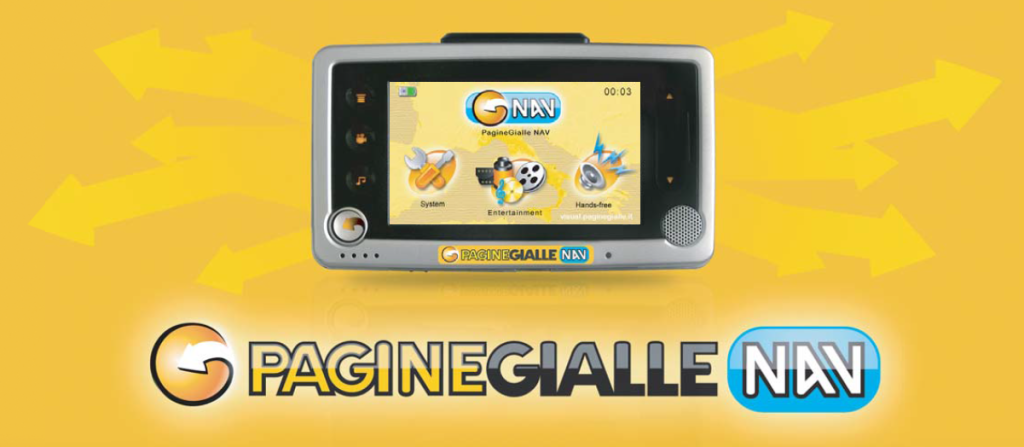
Customer:
Seat PagineGialle SpA
Challenge:
Create a Personal Navigation Device capable of challenging brands like TomTom and Garmin with a new paradigm for the search for your destination. From “bring me to somewhere” to “bring me to someone”
Year:
2005-2010
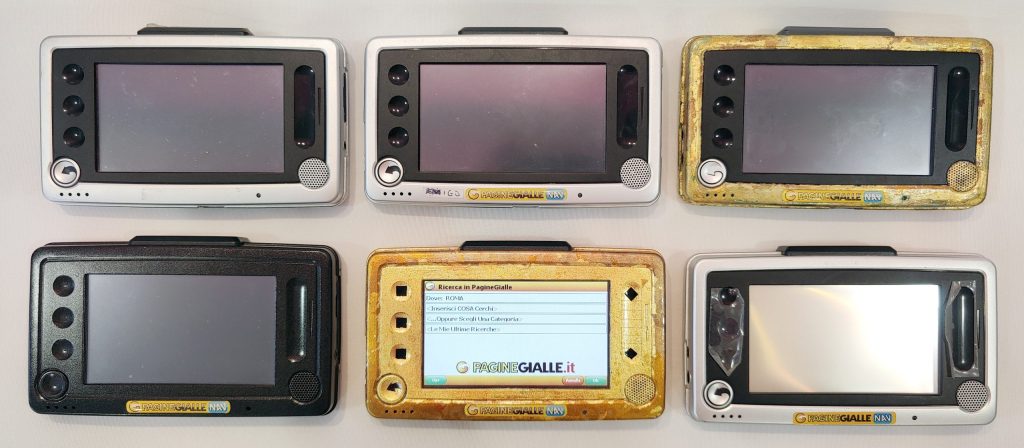
Playing with colors and crazy finishes with spare parts and prototypes.
Innovation at your fingertips
In 2005 the PNDs (Personal Navigation Devices) were something new and expensive, with very limited capabilities due to the limits of the technologies available. The Internet wasn’t easily available on the go and all these devices were isolated and unconnected. Maps and Points of Interest (POI) were all supplied on SD Cards or loaded into the internal Flash memory. The hardware was typically running Windows CE and the embedded GPS receivers were enabled only for the American constellation of satellites.
Maps were important, but the Points of Interest were sought after by users because allowed them to find restaurants, petrol stations, hotels and monuments. In some cases, the quality and dimension of the POI database were the reason to choose one or the other model.
The big names were Garmin and TomTom, while all the devices used either TeleAtlas or Navteq maps.
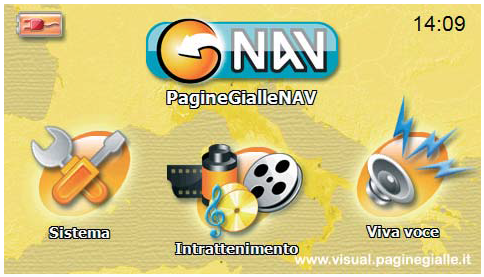
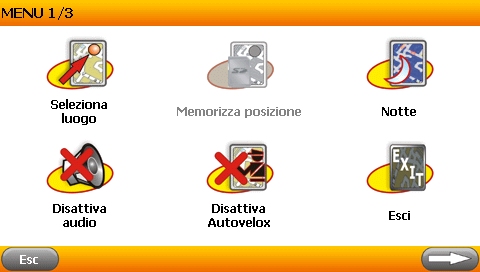
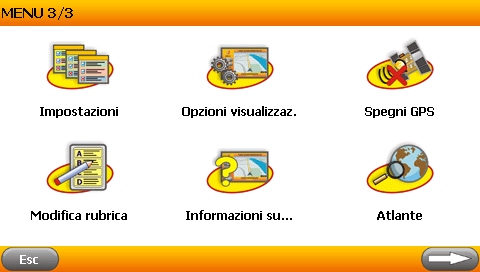
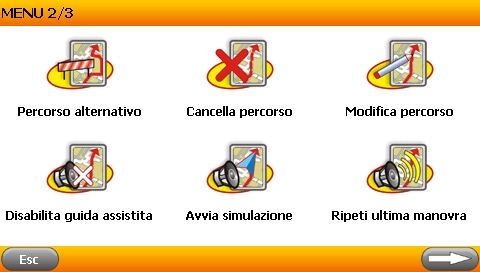
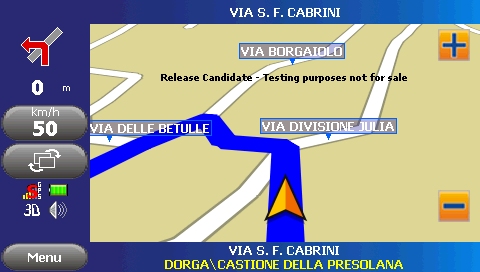
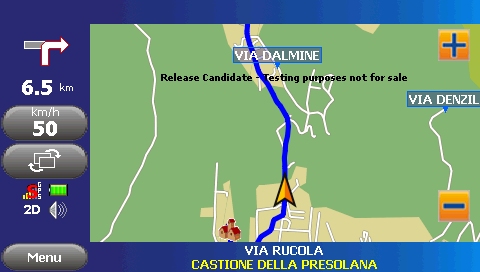
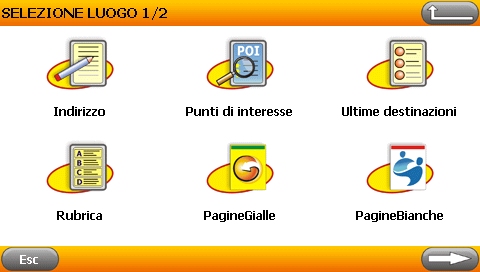
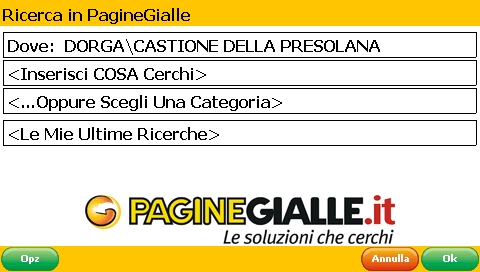
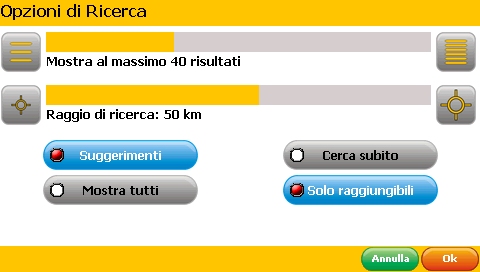
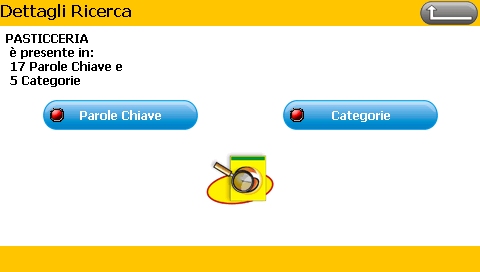
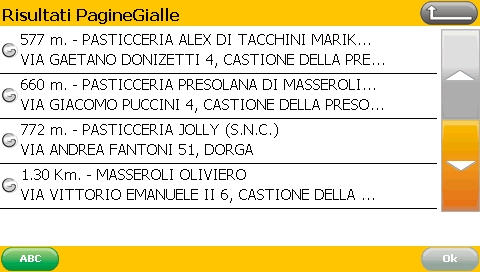
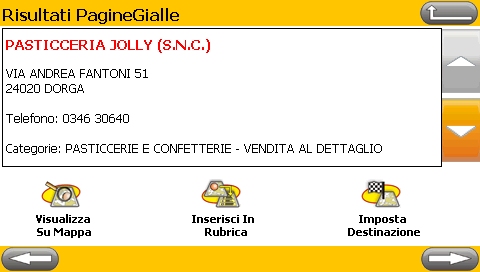
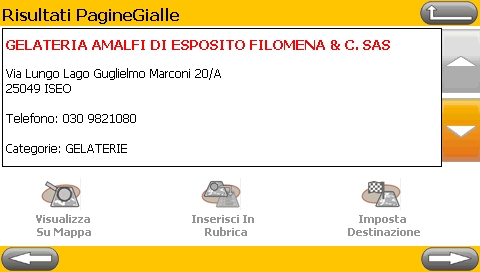
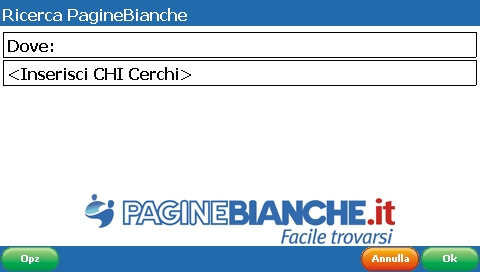
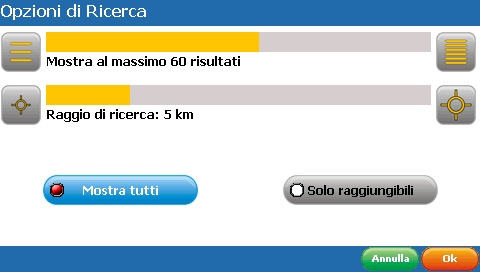
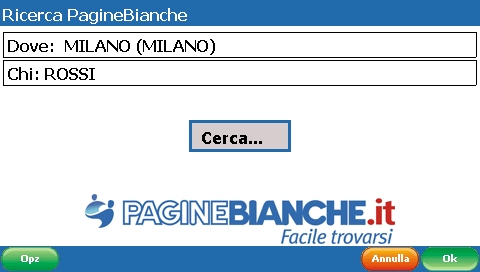
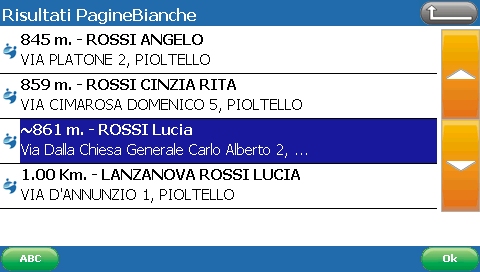
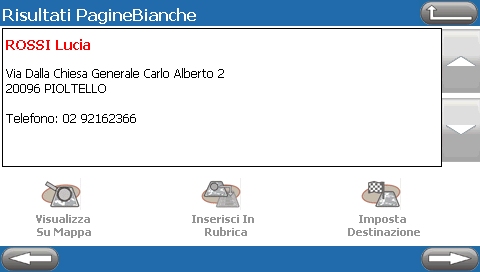
At that time I was working as a consultant for the Italian Yellow Pages. I specialized in Personal Digital Assistants and PocketPC.
Looking at the existing solutions, I submitted my proposal for a PND with all the Yellow and White Pages stored on the local SD as the full set of POIs. It was a very challenging idea because the databases were made of 20 million contacts for White Pages and 3.5 million contacts for Yellow Pages.
The best POI database
The advantage of SEAT PagineGialle database was its articulated taxonomy and the full georeference of every single record (or at least this was the official statement). At that time, Seat was constantly asked to give the database to TomTom and Garmin, but the PagineGialle NAV project changed everything.
I spent months with the developers to create the algorithms to encode the whole database in a georeferenced structure searchable with the limited size of WindowsCE memory pages. The approach I developed recursively stored the links to each record in square areas that became smaller and smaller until the memory limit was met. The whole map of Italy was divided in squares and the densest areas were with very small squares, while the less populated ones were covered by big squares.
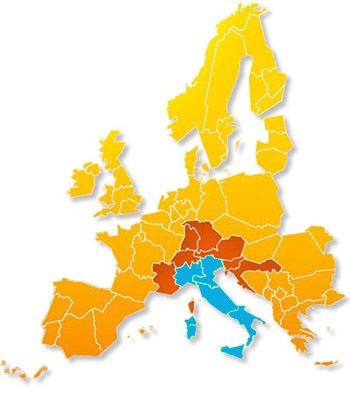
Seat PGNAV was supplied with full maps and POIs for the blue area, Full map and limited POIs for the orange area and all the main roads for the yellow area, allowing the user to travel around without having to worry about the maps available on the PND.
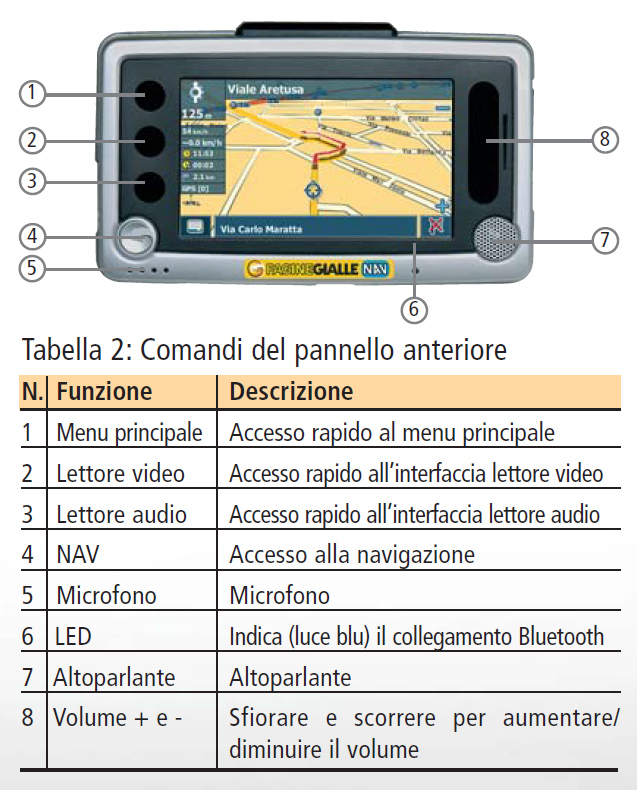
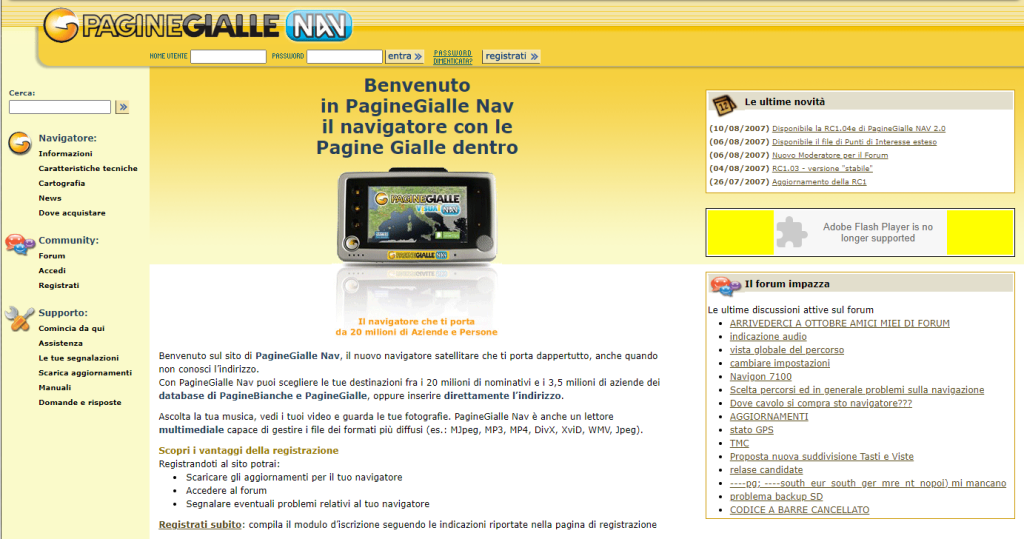
I worked with Royaltek in Taiwan to get the hardware properly designed and I was Project Manager, defining requirements, software specs and interface, DB integration, User Interface design and everything else, up to the Retail Box. The product was launched for the 2006 Xmas sales and it was successfully received by the market.
The product was supported by a Website and a Forum, which I personally managed during all the product life, from 2006 to 2010.
A lively community
Maps, POIs and how the routes were calculated were the main topics of discussion. In 2006 there were no official support forums from the PND manufacturers and the choice to offer support through a public forum brought even more attention to the product. Sometimes the forum had messages from other brands users, desperately seeking for help.
Discussions were following the typical forum dynamics and it happened that flames and trolls made my life as moderator quite hard.
The numbers were of over 6.000 registered users and over 20.000 messages.
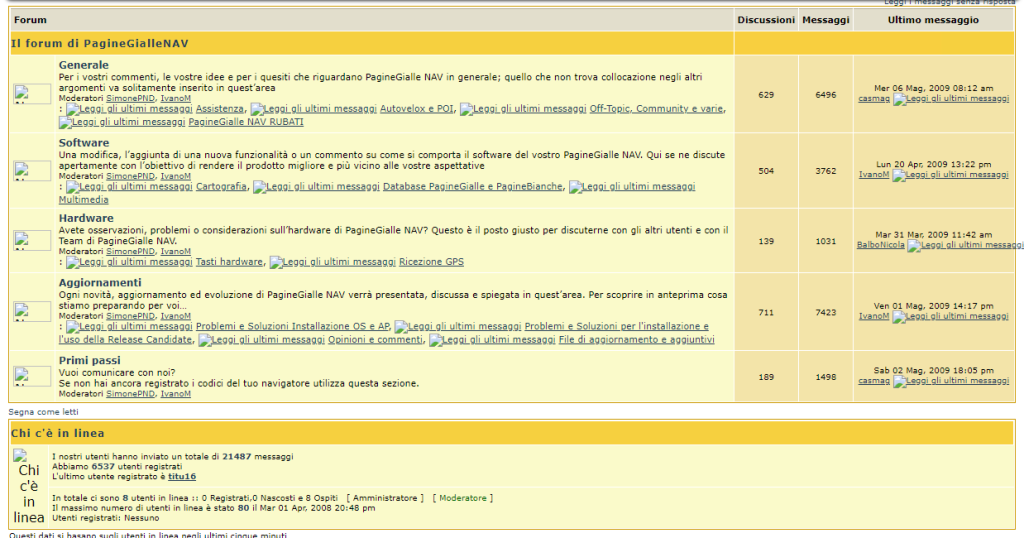
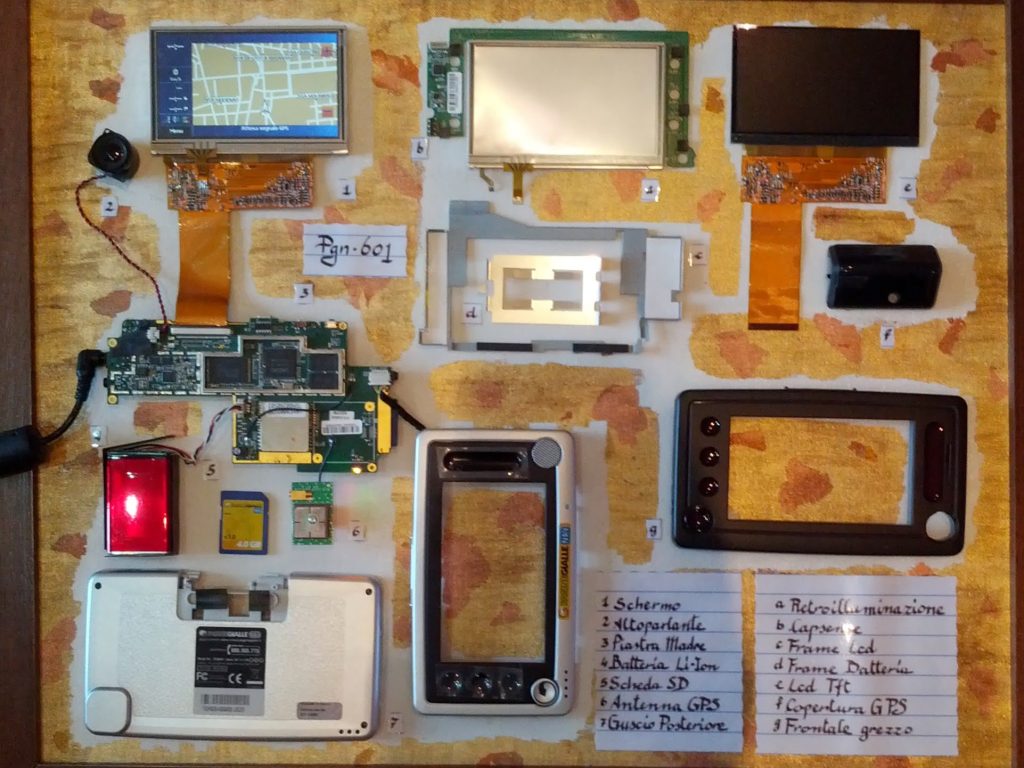
From design to service and repair
The repairs and warranty were my responsibilities and I was basically all the project because the structure of the company wasn’t prepared to support a physical device. My office inside Seat PG Milano was a lab, a small warehouse of spare parts and where all the PGNAV-related issues ended.
My skills with electronics and coding were essential to face all the issues that affected the product life, from an unplanned change of software to some hardware fixes on the installed base. The most dramatic event was the purchase of the software supplier by Nokia, making them not fit for the scheduled evolution. The new navigation software supplier/developer was more open and the second time I had to refine the UI, I was able to make it even better.
I was living a full immersion with the product, so I made crazy finishes with gold foil or panels with all the parts and a working exploded navigator.
The BIG deal
The next year, the solution was chosen by FIAT as the official Navigator for the new Fiat500 and we were at Salone di Ginevra proudly showing the PagineGialle NAV integrated into the Blue & Me device.
The hardware was with a smaller screen, but the hardware was collecting all the telemetry from the car Blue & Me interface. This allowed the software to keep working properly while the GPS signal was not available.
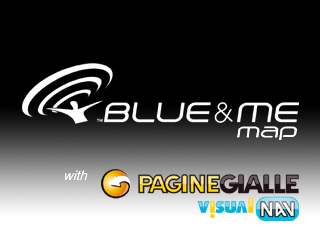
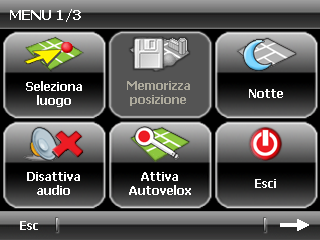
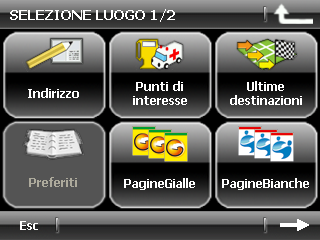
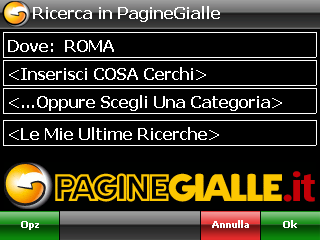
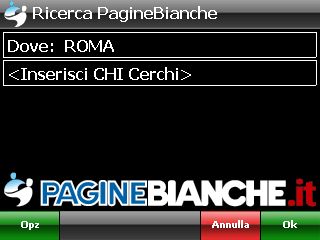
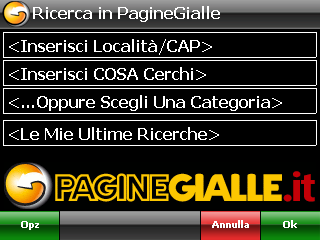
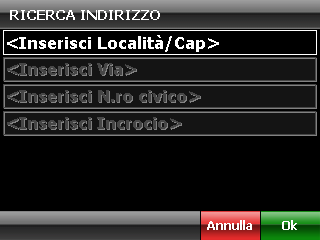
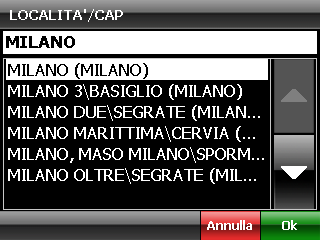
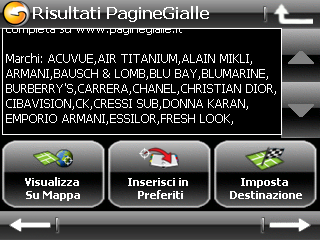
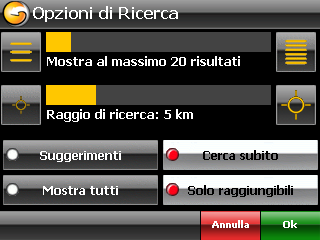
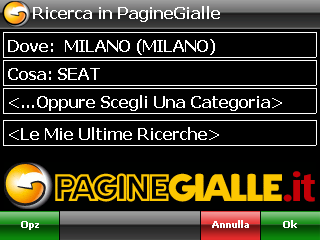
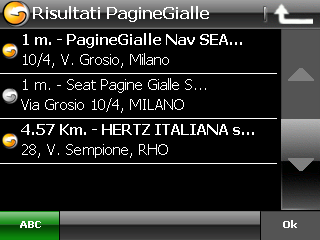
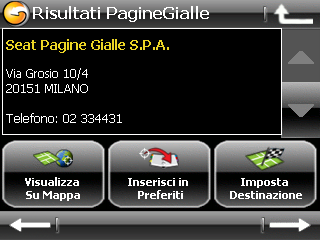
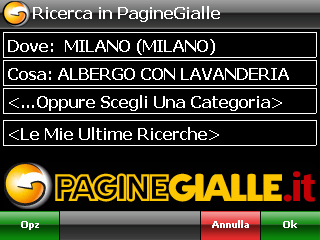
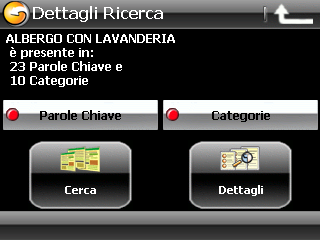
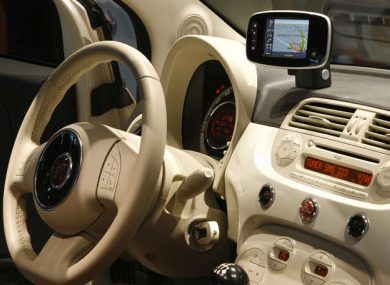
The PagineGialle NAV was also a very powerful sales tool for Seat Agents and we created a new model to give the sales force something to offer when the initial stock was sold out. The project officially ended in 2010 and the units sold were over 20.000. No other PND was able to put on the local memory – the SD card – so many POIs. The solution became obsolete when the mobile internet started to be available at a reasonable cost and smartphones replaced the PND to help people reach their destination.
